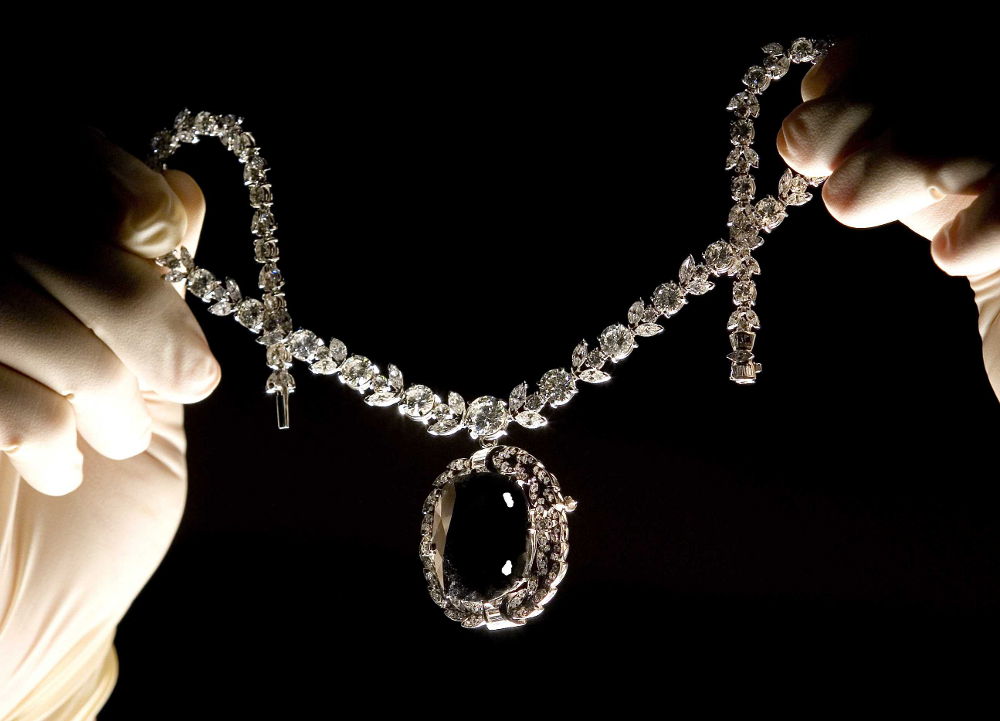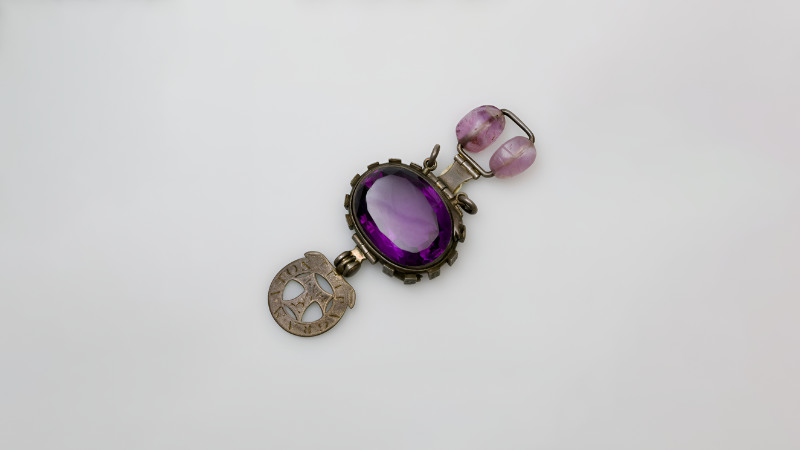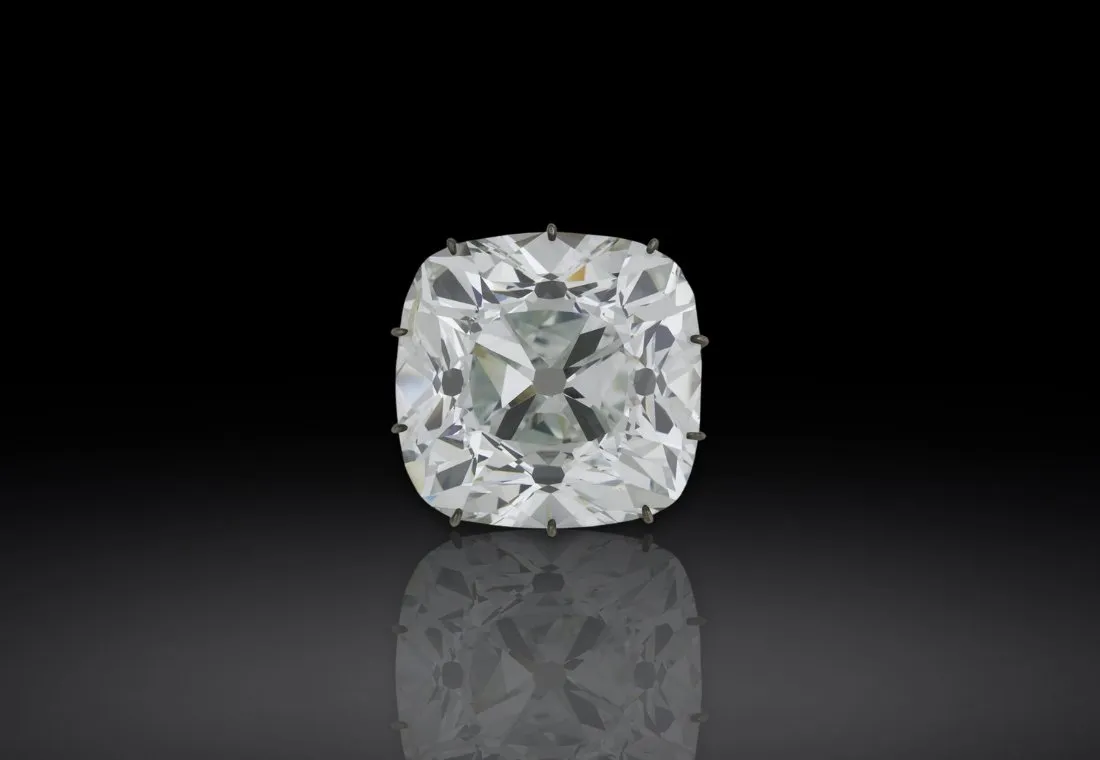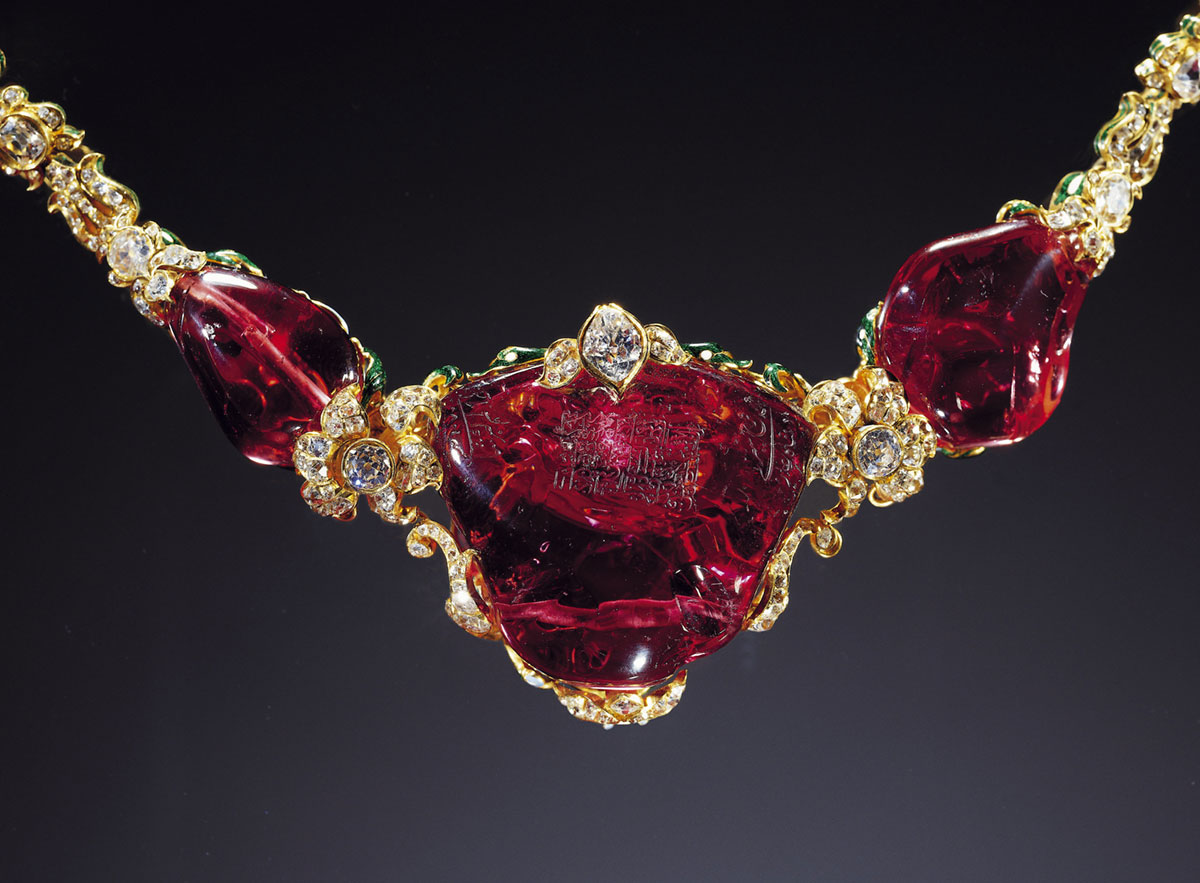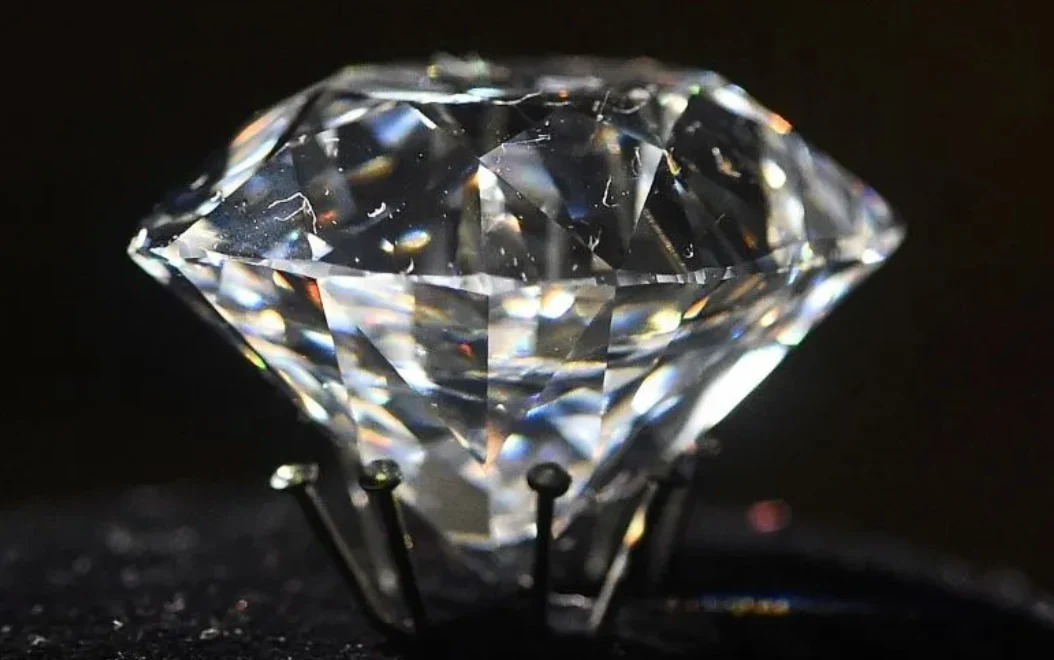
Humans have always been captivated by the shimmering grandeur of diamondsand other gemstones. Throughout history, these dazzling pieces of jewelryhave served as status symbols, prompting individuals to go to great lengths to possess them.
The allure of gemstoneshas led to theft, deceit, and even murder, creating a tapestry of intrigue and tragedy. Among these tales are the curses said to befall those who own certain stones, evoking both fear and fascination.
What Are Cursed Gemstones?
Cursed gemstonesare precious stones believed to harbor negative energies, bringing misfortune to their owners. This belief spans various cultures and historical contexts, where legends of theft, betrayal, and tragedy intertwine with the gemstones themselves.
The stories surrounding these cursed stones often reflect broader themes of power, greed, and the consequences of ambition. As individuals become enchanted by these beautiful objects, they may also unwittingly attract the dark tales that accompany them.
Key Characteristics Of Cursed Gemstones:
- Historical Context: Many cursed gemstones have a rich history filled with dramatic events and legendary tales.
- Psychological Impact: The belief in a gemstone's curse can lead to real psychological effects on its owners.
- Cultural Beliefs: Different cultures have their own stories and beliefs about specific gemstones and their curses.
The 11 Most Notorious Cursed Gemstones
1. The Hope Diamond: A Legacy Of Tragedy And Beauty
The Hope Diamondis arguably the most famous cursed gemstone in history. Weighing 45.52 carats, its striking blue hue captivates all who lay eyes upon it. However, the diamond is linked to a long list of tragedies, including murders, insanity, and even suicide.
The curse is said to have originated in the 17th century when gem trader Jean-Baptiste Tavernier stole the diamond from a Hindu statue. Once the theft was discovered, a priest allegedly placed a curse on anyone who dared to own it.
Notable Events:
- King Louis XVI and Marie Antoinette owned the diamond before their execution.
- American socialite Evalyn McLean faced personal tragedies, including the deaths of her children and her husband’s infidelity.
- After McLean's death in 1947, the diamond was donated to the Smithsonian Institution, where it remains today—reportedly curse-free.
2. The Black Orlov: The Eye Of Brahma
The Black Orlov, a striking 67.50-carat black diamond, is shrouded in mystery and lore. According to legend, it was stolen from the eye of a statue of Brahma, the Hindu god of creation. The curse began with this theft, leading to a series of tragedies for its owners.
Key Events:
- In 1932, a diamond dealer brought the Black Orlov to New York City, only to jump to his death shortly afterward.
- Princess Nadia Orlov, one of the diamond's later owners, also took her life by jumping from a skyscraper in Rome.
- Today, the Black Orlov is set in a diamond pendant, and its current owner claims the curse has been broken, but the tales surrounding it continue to intrigue.
3. The Koh-i-Noor: A Crown Jewel With A Bloody Past
The Koh-i-Noordiamond has a tumultuous 5,000-year history, marked by battles and bloodshed. This 109-carat gem is believed to bring misfortune specifically to male owners, while women are said to be immune to its curse. Historically, many male rulers who possessed the diamond met violent ends, often being dethroned in bloody conflicts.
See Also: 5 Precious Stones To Gift Your Partner - A Sparkling Guide To Timeless Love
Significant Facts:
- The diamond was part of the British Crown Jewels and is currently set in the coronation crown of the Queen Mother.
- Its ownership is still contested, with claims from Afghanistan, Iran, and India highlighting its contentious legacy.
4. The Delhi Purple Sapphire: A Tale Of Misfortune
Misnamed, the Delhi Purple Sapphireis actually an amethystlinked to a legend of theft from the Temple of Indra during the Indian Rebellion of 1857. Colonel W. Ferris, a British soldier, brought the stone to England, where his healthrapidly deteriorated, leading to his financial ruin.
Timeline of Events:
- The stone passed to Ferris's son, who also suffered misfortune.
- He gifted it to a friend, only for that friend to commit suicide shortly after receiving the "gift."
- Edward Heron-Allen acquired the amethyst in 1890, facing a series of unfortunate events himself. After attempting to dispose of the cursed stone, which found its way back to him multiple times, he ultimately locked it away. In 1943, Heron-Allen's daughter donated the amethyst to London's Natural History Museum, complete with a warning note about its curse.
5. The Sancy Diamond: The Enigmatic Recovery
The Sancy Diamond, weighing 55.23 carats and possessing a pale yellow hue, has a history filled with intrigue. Allegedly stolen from India, the diamond changed hands multiple times throughout the centuries. One of the most remarkable stories involves a messenger who swallowed the diamond to protect it from robbers. After his death, the gem was discovered in his stomach during an autopsy, further adding to its enigmatic reputation.
6. The Regent Diamond: A Royal Curse
The Regent Diamond, renowned for its association with Napoleon, weighs an impressive 140.64 carats. Stolen from India, the diamond’s curse began when a slave hid it in a wound on his leg to smuggle it out of the country. Tragically, the slave was murdered by the ship’s captain, who subsequently sold the diamond.
Noteworthy Events:
- Both King Louis XVIII and Charles X owned the diamond and were either exiled or forced to abdicate the throne.
- Its ties to Marie Antoinette and Napoleon mark a history filled with misfortune, making it one of the most cursed jewels in existence.
7. The Taylor-Burton Diamond: Love And Loss
Worn famously by actress Elizabeth Taylor, the Taylor-Burton Diamondis a pear-shaped gem weighing 69.42 carats. Known as "the first million-dollar diamond," it became part of Taylor's life during her tumultuous marriage to Richard Burton. Following their second divorce, Taylor auctioned the diamond for $5 million, using the proceeds to fund an orphanage in Botswana. While the diamond's connection to her personal life adds a layer of intrigue, it symbolizes resilience amid the chaos of loveand loss.
Related: Mark Your Milestones With Stunning Anniversary Jewelry
8. The Black Prince's Ruby: The Great Impostor
Despite its name, the Black Prince's Rubyis actually a large spinel, originally stolen from the Sultan of Granada in 1366. After being claimed by Don Pedro the Cruel, the ruby changed hands and eventually became part of the British Crown Jewels. Its history is fraught with violence and misfortune, often impacting its male owners.
Current Status:
Today, the Black Prince's Ruby sits atop the Imperial State Crown, a testament to its royal heritage, yet it remains a symbol of the darker side of gem ownership.
9. The Orlov Diamond: A Romantic Tragedy
Similar to the Black Orlov, the Orlov Diamondhas a storied past tied to romantic intrigue. Rumored to have been stolen from a Hindu temple, it became a gift from Count Grigory Orlov to Catherine the Great. Despite its beauty, the diamond carries the weight of the count's failed affections, reflecting the often tragic nature of love entwined with power.
10. The Eureka Diamond: The Diamond Rush
The Eureka Diamond, discovered in South Africa in 1886, is notable for being the first diamond found in the country. While its ownership does not feature notable tragediesfor its owners, the diamond is considered cursed due to the numerous deaths that occurred during the Kimberley Mine's diamond rush, highlighting the dangers associated with the pursuit of these exquisite stones.
11. The Taj Mahal Diamond: Jealousy And Curses
The Taj Mahal Diamond, gifted by Shah Jahan to one of his wives, carries a legend of jealousy and curses. One of his other wives, desiring the diamond for herself, supposedly placed a curse on it. The diamond’s journey through history reflects themes of beauty and rivalry, culminating in its exquisite design that currently incorporates rubies and diamonds.
How Cursed Gemstones Affect Their Owners
The psychological impact of cursed gemstones extends beyond mere superstition. Many owners report feelings of anxiety or foreboding, often attributing their misfortunes to the gemstone itself. Cultural narratives surrounding these stones reinforce the belief in their power, leading individuals to perceive their experiences through the lens of the gemstone’s reputation.
Key Psychological Effects:
- Fear and Anxiety: Owners may experience increased anxiety, believing the gemstone brings bad luck.
- Self-Fulfilling Prophecies: The belief in the curse can lead to negative outcomes, manifesting the very misfortunes they fear.
The Science Behind Cursed Gemstones
From a scientific standpoint, the effects attributed to cursed gemstones may often be explained by psychological phenomena. The placebo effect suggests that when individuals believe a gemstone is cursed, their perception can shift, potentially leading to self-fulfilling prophecies. The fear of a curse can manifest in anxiety, impacting the owner's life and decisions.
YouTube Video

The World's Most Cursed Gemstones!!
Psychological Phenomena:
- Placebo Effect: Beliefs can influence emotional and physical responses.
- Sociocultural Influences: Cultural narratives shape perceptions of luck and misfortune.
Protecting Yourself From Cursed Gemstones
For those wary of the potential dangers posed by cursed gemstones, several protective measures can be taken:
Practical Tips:
- Saltwater Immersion: Submerging gemstones in saltwater to purify them.
- Sunlight Exposure: Charging the stone with natural light.
- Sage Smoke: Using sage to cleanse the gemstone of negative energies.
- Research: Thoroughly investigate a gemstone's history and reputation before making a purchase. Avoid stones with negative associations or documented curses.
- Cleansing Rituals: Various cultures practice cleansing rituals to remove negative energy. Techniques include:
- Use Protective Crystals: Incorporate protective stones like black tourmalineor amethyst to counteract potential negative influences.
Myths Vs. Facts: Debunking Cursed Gemstone Myths
Many tales surrounding cursed gemstones are captivating, yet not all are based on fact. Here are some prevalent myths:
Common Myths:
- Myth: All gemstones are cursed.Fact: Not every gemstone carries a curse; many are cherished for their beauty and positive attributes.
- Myth: Cursed gemstones always lead to immediate misfortune.Fact: The impact of cursed gemstones varies widely, with many owners experiencing no negative consequences.
- Myth: Only famous gems are cursed.Fact: Lesser-known gemstones can also carry curses or negative associations, often rooted in personal stories and folklore.
The Cultural Significance Of Cursed Gemstones
Cursed gemstones play a vital role in cultural narratives around the world. Many societies regard gemstones as symbols of power, status, and wealth while simultaneously acknowledging their potential for misfortune. For instance, the Koh-i-Noor's history is deeply intertwined with royal legacies, whereas the Hope Diamond serves as a cautionary tale about greed and ambition.
Read Also: Bernardine & Grimball Jewelers Limited Unveils Merger, Ushering In A New Era Of Luxury Jewelry
Cultural Insights:
- Folklore and Legends: Many cultures have stories that explain the origins of curses attached to specific gemstones.
- Symbols of Power: Gemstones are often seen as talismans, believed to bring either fortune or misfortune.
FAQs About Cursed Gemstones
Can A Cursed Gemstone Bring Bad Luck?
Beliefs surrounding cursed gemstones suggest they can bring bad luck, but experiences differ among individuals. Psychological factors often play a significant role in how one perceives and interacts with such stones.
How Can I Identify A Cursed Gemstone?
Identifying a cursed gemstone involves researching its history and associated legends. Be cautious of stones with well-documented curses or negative reputations.
Are There Protective Measures For Cursed Gemstones?
Yes, protective measures include researching gemstones before purchase, performing cleansing rituals, and utilizing protective crystals to counteract negative energies.
Are All Gemstones Safe To Own?
While many gemstones are perfectly safe, it's wise to understand their history. Some may carry negative associations, so doing your homework can help avoid misfortune.
Conclusion
The world of cursed gemstones intertwines myth, history, and psychology in a complex narrative. Their tales, filled with tragedy and intrigue, serve as reminders of the delicate balance between beauty and misfortune. Understanding the stories and cultural significance of these gemstones provides insight into their lasting impact on individuals and societies.

